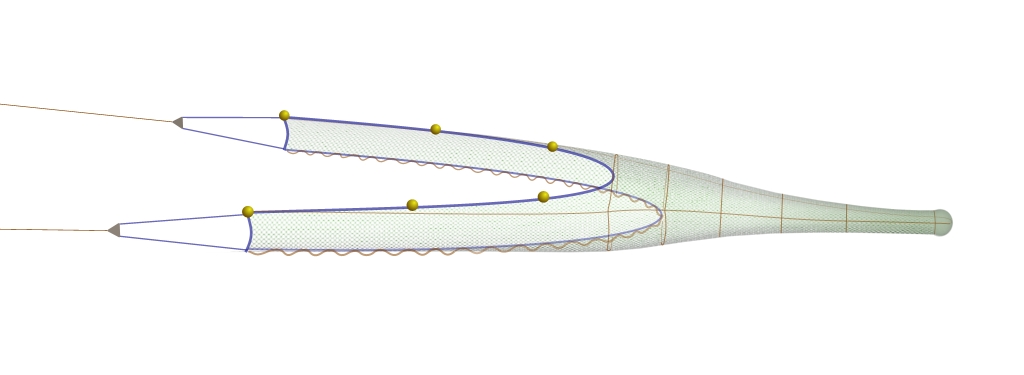Headline Height
Summary
Usually this is in reference to a trawl or static net where the gear has been redesigned to keep the headline (top of the net) very low, probably below 1 metre in height to prevent the capture of high swimming species.
It is working on the principle that different species of fish tend live or move at specific heights off the seabed or below the surface. This may be all the time, or at different times of the day (often daylight or dark) or even on a seasonal basis. The gear is modified to target this reduced area in the water column that most of the target species swim in.

Size selectivity
By altering the height of any gear it can be made to be more accurate at targeting specific species or in some cases size of fish.
Rather than towing a large trawl to capture a wide variety of species it may be more profitable to tow a lower headline trawl that is more species selective for low swimming fish. Changing to higher headline gear when there are more high swimming fish in the area. This may be done at different times of the day, or on a seasonal basis or to give better management that the vessels quota allocation.

Other information
It is a known fact that certain species of demersal fish, such as haddock and whiting, swim higher off the seabed than others such as cod and the flat fishes. If the headline (top) of the net is kept below this height the net should avoid catching the majority of these species. By altering the design of a net to limit the height of the headline the net can be made more species selective.
Some trawls and gill nets are already designed to only catch species that live really close to the seabed by making them stand only a few feet off the seabed. Examples of this are nephrop trawls and sole trawls that both will have a height in the region of two to three feet (600 - 900m).
However both these species can be caught using higher standing gear that has been developed to catch the bottom swimming fish and some of the higher swimming species.

Therefore a low headline net can be classed as a 'selective device' as it avoids capture of certain species. It may need some other selectivity measure included in its design to improve sizes selectivity of the target species.
Low headline trawls and static gear are generally used to target the bottom living species such as nephrops, flatfish and monkfish and to avoid most of the whiting and haddock.
By incorporating a coverless design as well as the low headline into the trawl the selectivity can be further improved.
Selection type
-
- Pre-selection